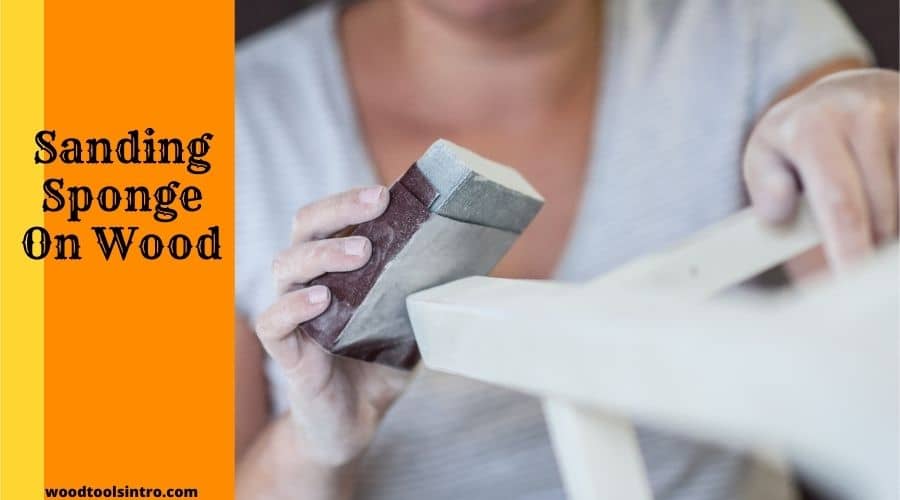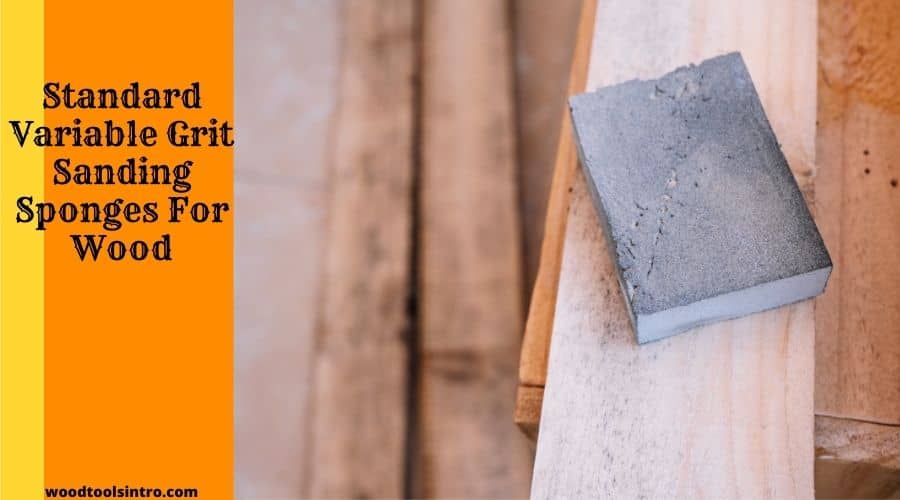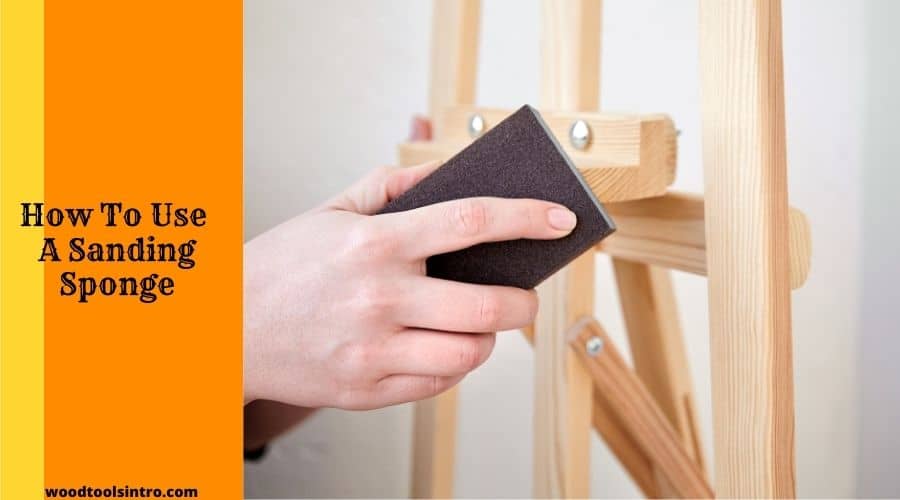Sanding sponges are a top choice for smaller projects and trim jobs. They’re better than wall sanders when you know the proper usage of this useful tool. You can use a sanding sponge for wood, drywall, plastic, and other different surfaces.
Instead of a piece of paper, a sanding paper sponge contains abrasive material included directly to the sponge foam.
In this post, we’ll share everything about sanding sponges and how to use this sponge-like sanding tool.
If you want to learn about top brand sanders, check out bellow
What Is A Sanding Sponge?
Sanding Sponges are nothing but a foam block on each side and edge. They’ve a rough or grit feeling on each side.
However, this sponge-like sanding tool has a higher grit on one side and a medium grit on the opposite side.

Double grit sanding sponges are also available in the market. But their gritting quality and density will vary from regular sanding sponges.
To work on complicated crannies and nooks easily, dual-angle sanding sponges are also available. Spots like ceilings and corners can be easily handled using it.
Sanding Sponges can be an effective option to sand on complex curves and furrows. You can smoothly and conveniently complete trim and molding tasks using this sponge-like sanding tool.
Can You Use Sanding Sponge On Wood?
Yes, you can use a sanding sponge on wood. Since sanding sponges come in different sanding blocks, you’ve to determine their compatibility to use with the particular sanding sponge.

Before purchasing sanding sponges for woods, make sure you go through the product label properly. It should be clearly mentioned whether you can use the particular sanding sponge on the wood surface.
Some sanding sponges may also mention what wood surfaces are suitable for the specific sanding sponge.
Standard Variable Grit Sanding Sponges For Wood
Some Sanding Sponges can be used for multiple purposes on a wide variety of woodworking surfaces. However, some of them are only suitable for particular wood surfaces.
Like regular sandpapers, sanding sponges are available in various grits. A lower grit number means it’s tougher. That’ll take off more substances from the wood surface.

On the contrary, a higher grit number means it provides a finer finish. Unlike lower grit, it’ll remove fewer substances from the wood surface but remain smooth.
Additionally, you’ll find sanding sponges in different sizes, from large to medium to small. Large sanding sponges are better for furniture painting and cabinets sanding dust cleaning, while tiny sponges are ideal for small wooden crafts or other detail projects.
How To Use A Sanding Sponge

Sanding sponges are practical to use. But you won’t get reliable results when you misuse them. Here’re the steps to follow when using sanding sponges:
- Step 1 — Safety
Make sure you wear the goggles before doing your sanding projects. Wearing a high-quality mask is also essential since dust will enter your body through your nose and mouth.
- Step 2 — Start with a low grit
As we mentioned earlier, sanding sponges with lower grits takes off more substances from the surface. They’re effective for quick wood removal.
You can choose 60-grit or 80-grip based on how hard the surface is. Do the sanding job systematically.
- Step 3 — Sand with the grain
Make sure you don’t sand from one side to another. You should sand with the grain. This’ll provide the finest finish. Also, no scuff spots will be seen on the surface.
- Step 4 — Mark the area you’d like to sand
Avoid keeping the removed wood substances on the surface. Get rid of them immediately. Don’t keep them in a corner. Some of them may get stuck on the surface.
- Step 5 — Use even pressure
Don’t put excessive pressure to remove substances from the surface. This may lead to scratches.
If high-grits aren’t removing some wood materials, you can choose sanding sponges with lower grits. But still, you shouldn’t put extra pressure.
Benefits Of Using A Sanding Sponge
Why use sanding sponges instead of sandpapers?
The answer is simple. They’re efficient and comfortable to use. After all, you don’t want to experience fatigue issues after sanding all day long.
Sanding Sponges Are Comfortable
Sandpapers are not a good choice when you need a proper grip, support, and comfort while sanding on your wood. Your hands will feel tired after working a few hours.
Also, you’ll experience slippery issues. In such cases, sanding sponges are effective and reduce your work pressure.
Sanding Sponges Are Fast
Want to save time? Surely, sanding sponges are a time-saver for your sanding projects compared to sandpapers.
This practical tool provides excellent grip, improves the smooth working ability, and most importantly, ensures even pressure for the entire surface.
Sander Sponges With Dust Channeling Surface
Clogging-resistant channels are included for many sanding sponges. But you won’t find them for all sander sponges. Plus, this feature is absent in typical sandpapers.
Sanding Sponges Can Reach In Tight Corners
Regular sandpapers aren’t handy to use on hard-to-reach areas, such as corners or edges. Sander Sponges are a top-rated choice for such purposes.
Sanding Sponges Resist Damage
Sanding Sponges don’t get prone to damage easily. You can use the rest of the part even if a few portions are torn or damaged.
Downsides To Sanding Sponges
Just because sanding sponges are practical to use doesn’t mean they are free of disadvantages.
Sanding Sponge Versatility
Sanding Sponges aren’t as versatile as sandpapers. You can’t often use them in several ways like sandpapers.
Sanding Sponges are More Expensive
Sanding Sponges are pretty expensive than sandpapers. One piece of sanding sponges will cost 5 dollars.
Fewer Grit Options
When you want several grit options, you’ll have to purchase multiple grit options.
Frequently Asked Questions
A small block of off-cut wood can be utilized as a sanding block.
Yes, you can cut thin sanding sponges in various shapes and sizes.
Yes, most sanding sponges are washable and reusable.
120-150 grit paper will be perfect to sand wood before staining.
Sandpaper is better for flexibility and low price while sanding sponges are suitable for precise works.
Conclusion
When you want precise works, sanding sponges is a practical choice. Sanding sponge for wood will surely be a comfortable and more controlled sanding experience.

I am Imtiaj Islam. I am a wood working enthusiast, having 6 years of experience in carpentry work. I have a BBA graduate degree from Chittagong College. I got vocational training on wood works from Korean Polytechnic out of the quest and zest he has for carpentry as well. I take several wood projects and keep testing different woodworking tools for comfortable and perfect work. I just love playing with woods and machines.
